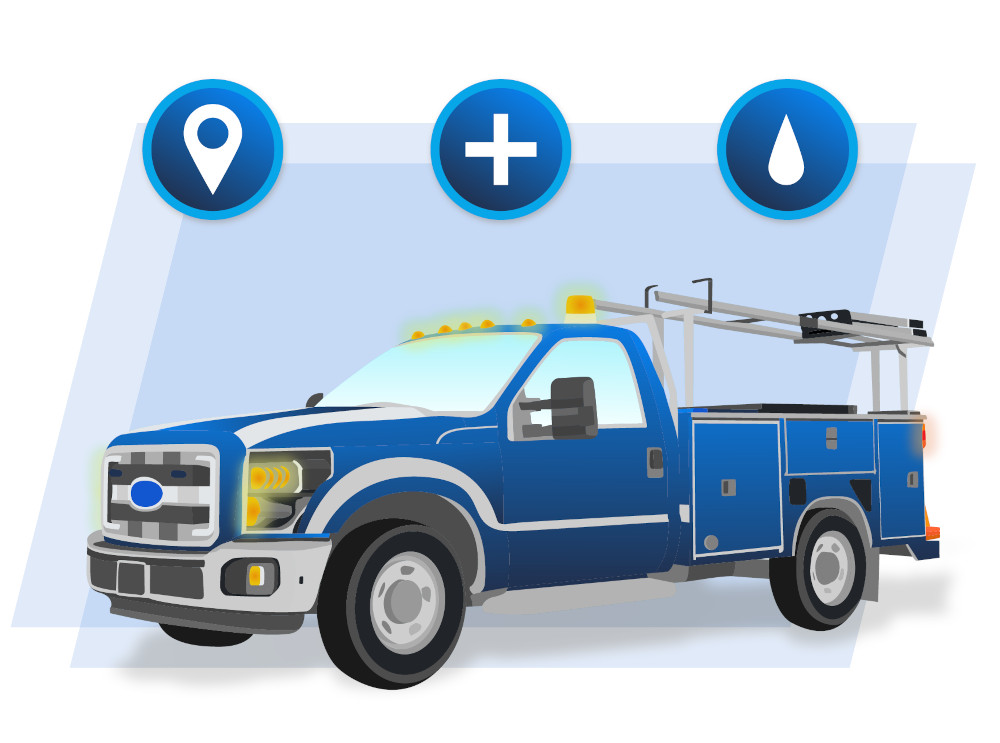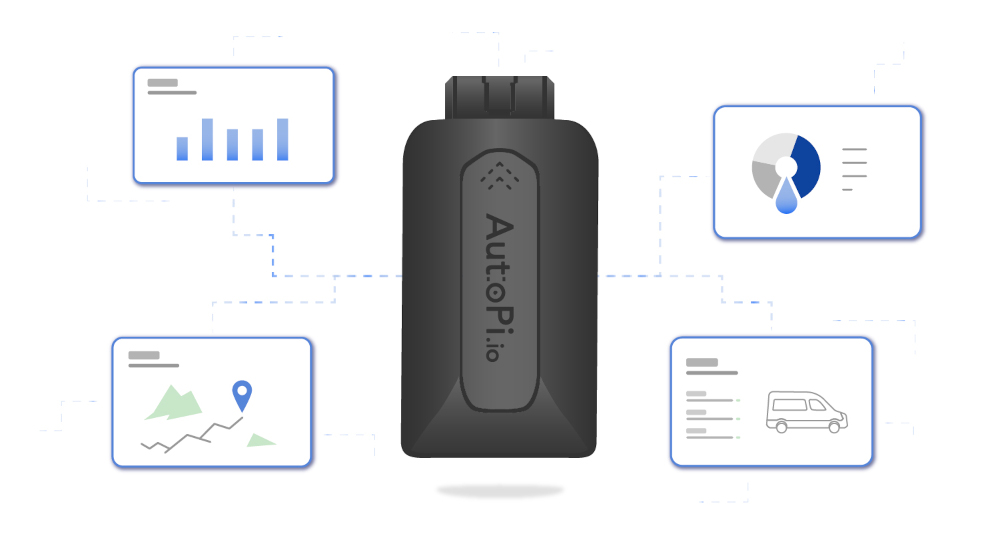If you're aiming to step up your driver management game, you've landed in the right spot.
Did you know a major cause of road accidents is neglected driver management? The U.S. Department of Transportation points out that just last year, poor management led to thousands of accidents.
Here’s a staggering number: In 2019, the total economic cost of motor vehicle crashes in the U.S. was $340 billion. That's a lot, right?
But no worries—that's why you're landed here, to make a change.
This guide isn't about overwhelming you with every possible tactic. Instead, we're focusing on strategies that are not just tested but proven to work effectively.
Let’s get started.
What is Driver Management?
Some companies really get this right, while others have a harder time. The ones that nail it treat driver management as a core part of their everyday operations.
It’s much more than just giving directions; it’s about carefully overseeing all aspects of a driver's job to make sure everything runs smoothly, just like clockwork.
From an expert standpoint: Driver management is the strategic coordination of personnel, resources, and policies
to maximize the safety, efficiency, and legal compliance of a driving fleet. It involves a mix of hands-on
supervision and technology-driven solutions to oversee the full spectrum of activities that drivers engage
in—from the moment they clock in, to the time they complete their routes.

Here's a breakdown of what this typically includes:
-
Recruitment: This is all about picking the right people for the job. We look for drivers who are not only great behind the wheel but also punctual, responsible, and customer-friendly.
-
Training: Every driver goes through a rigorous training regime that covers everything from advanced driving techniques to customer service and first aid.
-
Scheduling: It's a juggling act to match drivers with optimal routes and shifts, ensuring they're fresh and alert, which keeps efficiency up and stress down.
Monitoring: We keep an eye on how drivers are doing on the road, making sure they stick to routes and schedules, and follow safety rules.
-
Compliance: There’s a lot of paperwork in ensuring every part of the operation is up to code, from vehicle maintenance to driver health checks.
-
Safety and Incident Management: We put systems in place to prevent accidents and have clear, quick procedures for when things go wrong.
- h
Retention and Motivation: Keeping drivers happy and motivated is key. Happy drivers means less turnover and a better atmosphere for everyone.
Understanding and implementing these elements effectively can completely transform how your company manages its drivers, leading to fewer accidents, higher job satisfaction among drivers, and ultimately a more productive business.
So, now that we've got the basics down, what's next? It's time to put all this theory into practice. We'll walk through how to put together a rock-solid driver management plan.
Establishing a Driver Management Plan
Creating a solid driver management plan is key to keeping your operations smooth and your drivers happy and safe.
Let's walk through the first three critical steps up building a system that really clicks.
Step 1: Hiring Skilled Drivers
-
Finding the Right Fit: What makes a stellar driver for your team? Think about qualities like a clean driving record, top-notch navigational skills, and a knack for customer interactions. Tailor your recruitment strategies to zero in on these trails, using platforms from online jobs boards to industry-specific recruiters.
-
Digging Deeper in Interviews: Don't just settle for standard Q&A. Mix in practical driving tests and scenario-based questions to see your candidates in action. This helps gauge how they handle the pressure and challenges of the road.
-
Thorough Background Checks: Safety first, right? Make sure to check out your candidates' past driving records, criminal history, and job references. It's all about ensuring that your fleet is as safe and reliable as it can be.
Step 2: Comprehensive Training Programs
-
Onboarding with Impact: When new drivers join your team, immerse them in everything from your company’s culture to emergency response drills. It’s about making them feel at home and ready for anything.
-
Keeping Skills Sharp: Regular workshops on the latest driving regulations, vehicle tech updates, and defensive driving tactics keep your drivers on top of their game and engaged in their roles.
-
Tech Savvy: As tech evolves, so should your team. Whether it’s mastering new GPS systems or logging devices, make sure your drivers are as tech-savvy as they are road-savvy.
Step 3: Implementing Scheduling Best Practices
-
Smart Routing: Utilize cutting-edge routing software to navigate around traffic jams and bad weather, ensuring drivers are taking the best routes possible. It’s about getting there smarter, not harder.
-
Balancing the Load: Keep an eye on how much is too much. Schedule wisely to ensure drivers aren’t run-ragged, blending legal rest requirements with a genuine respect for their time and well-being.
-
Fair Play: Make scheduling transparent and considerate of driver preferences. A little flexibility goes a long way in boosting morale and keeping turnover low.
These steps lay a robust foundation for managing your drivers efficiently and with care.
By focusing on these areas, you set the stage for the more detailed management aspects like performance monitoring, compliance checks, and retention strategies, which we'll get into next.
Using Technology to Improve Driver Management
In today's fast-paced world, technology is a game-changer for managing fleet drivers.
Let's take a look at some of the different tools that you can use to supercharge your fleet operations.
GPS tracking system are a must-have, giving you real-time vehicle locations and smarter routes that save time and fuel. Electronic Logging Devices (ELDs) cut down on paperwork by automatically tracking driver hours, making compliance a breeze. Plus, reliable communication tools keep you and your drivers in sync, quickly sharing updates about route changes or potential hazards, boosting both safety and efficiency
Building on the solid foundation provided by GPS tracking, ELDs, and communication tools, telematics and fleet driver management software take things to the next level.
These technologies work perfectly together, transforming how some our clients oversee their fleets.
Telematics delivers deep insights into vehicle performance and driver behaviors, which enables users to proactive maintain and pinpoint areas where driver training is needed. When integrated with fleet driver management software, it provides a comprehensive view of your entire operation.
Many of our clients have leveraged these combined technologies to refine their maintenance routines and enhances driver safety protocols, achieving a significant reduction in both downtime and accidents. This has not only boosted their operational efficiency but also slashed costs dramatically, making this approach the star of our fleet management solutions.

Take Your Driver Management to the Next Level with AutoPi
If you’re looking to take your fleet management to the next level, the AutoPi CAN-FD Pro device could be just what you need.
It gives you real-time data on things like driver behavior, vehicle performance, and how efficiently your routes are working—so you can make smarter decisions. With features like live GPS tracking, fuel monitoring, and even predictive maintenance, the AutoPi device plugs right into your fleet’s operations.
It’s all about helping you stay on top of things, whether that’s tracking how drivers are doing on the road or optimizing routes to save time and fuel. It’s one of those tools that makes your life a whole lot easier.
Monitoring and Evaluation
Keeping an eye on how well driver are doing isn't just about sticking to the rules—it's about helping them be their best.
Here's how our clients keep tabs on things and make sure everyone's on track:
Real-Time Performance Tracking: Many of our clients equip their vehicles with AutoPi telematics devices. These tools provide instant updates on behaviors like speeding or harsh braking. If something’s not right, they can address it immediately, sometimes directly communicating with drivers to correct behaviors on the go.
Regular Performance Review: Our clients often hold regular review sessions with their drivers to go over performance data. These meetings are an opportunity to acknowledge good work and discuss areas for improvement, based on real, tracked data.
Key Metrics Our Clients Track:
-
Safety Scores: These are all about how well drivers stick to speed limits and follow traffic rules. Higher scores mean fewer worries.
-
Fuel Efficiency: Watching how much fuel is used tells them a lot about driving habits and helps cut costs.
-
On-Time Deliveries: They always check if our deliveries are made on time because it keeps their customers happy.
-
Vehicle Downtime: Keeping track of how often their vehicles are out of service helps them stay proactive about maintenance.
By focusing on these metrics, our clients can fine-tune their operations, ensuring their teams are efficient and safe, while also boosting overall fleet performance.
Ensuring Driver Safety and Compliance
When it comes to managing a fleet, safety isn't just a priority—it's a necessity. It’s about looking after your drivers and everyone else on the road.
Why Focus on Safety? Putting safety first builds trust and ensures every journey ends safely. Choose only the best vehicles, equip them with top safety features, and keep them in prime condition. This way, you’re not just complying with rules; you’re actively protecting lives.
Routine Checks: Regular inspections do more than meet standards—they prevent problems. Catching issues early on keeps your drivers safe and your vehicles running smoothly, reducing the chance of accidents.
Staying Legal: Following transportation laws helps keep everyone safe. These regulations make sure drivers get enough rest and vehicles meet safety requirements. More than avoiding fines, you’re creating a safe working environment for your drivers.
Continuous Training: Ongoing education in safety practices is crucial. By regularly training your drivers, you empower them to handle unexpected situations and make safe decisions. It’s about fostering a culture where safety comes naturally.
A strong commitment to safety affects every part of your operations and enhances your reputation. More importantly, it shows you care deeply about your people and their safety every day.
Driver Motivation and Retention strategies
Keeping your drivers happy and onboard is crucial for a smooth-running and strong fleet.
Here’s a friendly guide laid out in a table that breaks down various ways to boost driver morale and long-term commitment:
|
Strategy
|
Description
|
Benefits
|
|---|---|---|
| Recognition and Rewards | Celebrate drivers with 'Driver of the Month' awards and bonuses for top performers. It's all about showing appreciation and acknowledging hard work. | Enhances morale, makes drivers feel valued, and increases job satisfaction. |
| Competitive Compensation | Keep pay and benefits attractive and competitive within the industry. Regularly review and adjust compensation packages to stay competitive. | Attracts top talent and encourages them to stay. |
| Career Development | Offer opportunities for training and advancement. Help drivers expand their skills and advance within the company. | Enhances skill sets, encourages long-term commitment, and turns jobs into careers. |
| Positive Work Environment | Foster a culture of respect and teamwork. Address issues promptly and encourage open communication. | Reduces turnover, builds a supportive community, and maintains employee morale. |
| Work-Life Balance | Respect drivers’ needs for downtime. Offer flexible scheduling and ensure workloads allow for adequate rest. | Increases job satisfaction and reduces burnout, keeping drivers refreshed and focused. |
| Wellness Programs | Support drivers' physical and mental health with access to fitness programs and mental health resources. | Improves overall well-being, reduces healthcare costs, and decreases absenteeism. |
Implementing these strategies can create a supportive work environment that not only meets the professional needs of drivers but also promotes their personal well-being.
Motivated and well-supported drivers are more engaged, productive, and less likely to seek employment elsewhere, contributing to the stability and success of the fleet.
Conclusion
Managing a fleet is more than just overseeing vehicles; it’s about supporting the people behind the wheel.
We’ve covered some key strategies in this guide, from boosting safety and compliance to keeping your drivers motivated and engaged. Putting these ideas into practice can transform how your fleet operates, improving everything from driver satisfaction to customer service.
Now it's up to you to take the next step. Look over your current driver management methods and see where there’s room for a little innovation. Maybe it’s time to refresh your safety procedures, beef up your training programs, or start a new driver recognition plan. Each change you make could bring big benefits.
Need Some Help? If you’re looking for guidance or need a customized plan that fits your fleet’s unique needs, just reach out. Our team is here to help you fine-tune your operations and get the best out of your fleet.







